Palmetto Regiment Monument
Introduction
Text-to-speech Audio
Images
Palmetto Regiment Monument.
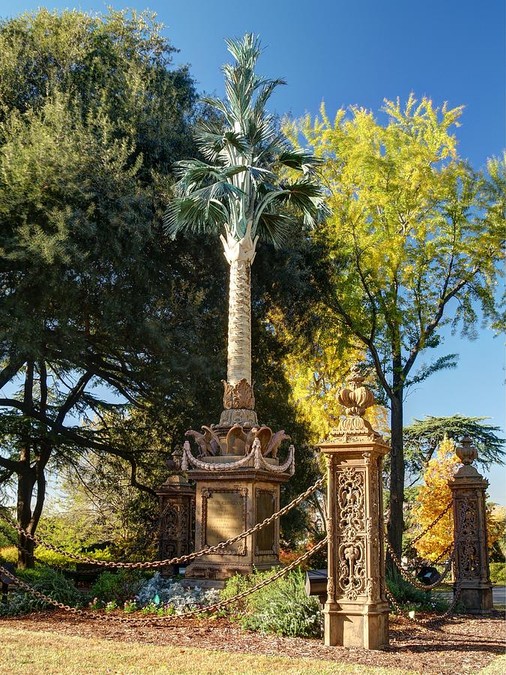
Palmetto Regiment Monument.
.jpg)
Palmetto Regiment Monument, 2019.
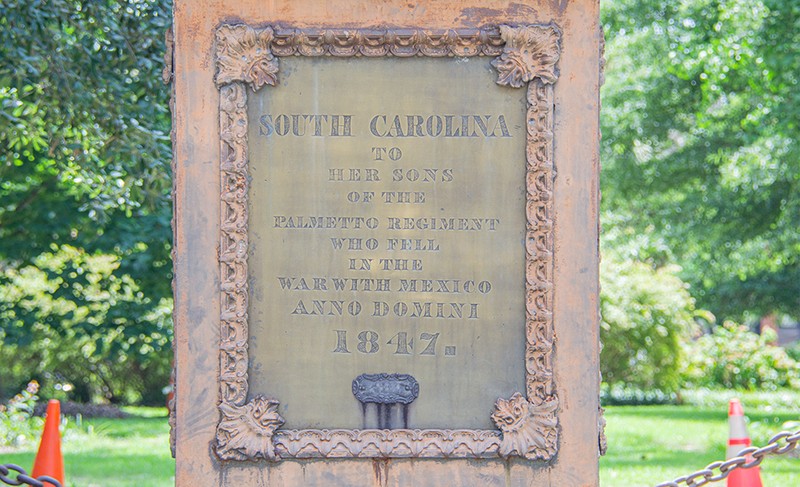
Palmetto Regiment Monument, 2019.
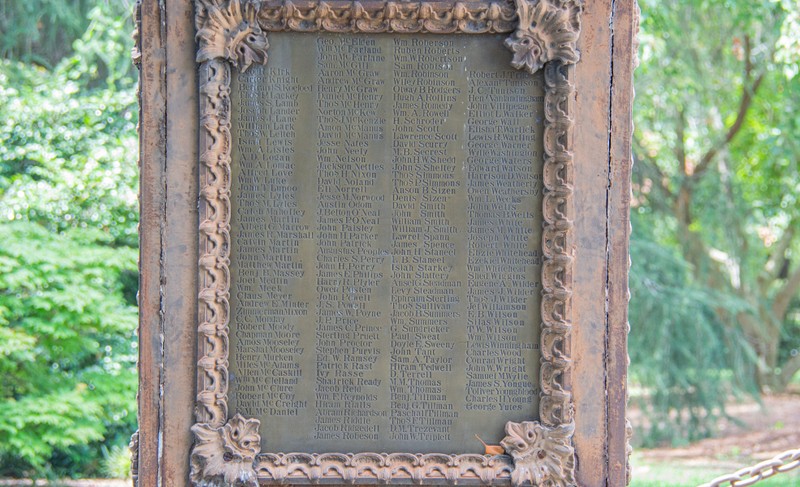
Palmetto Regiment Monument, 2019.
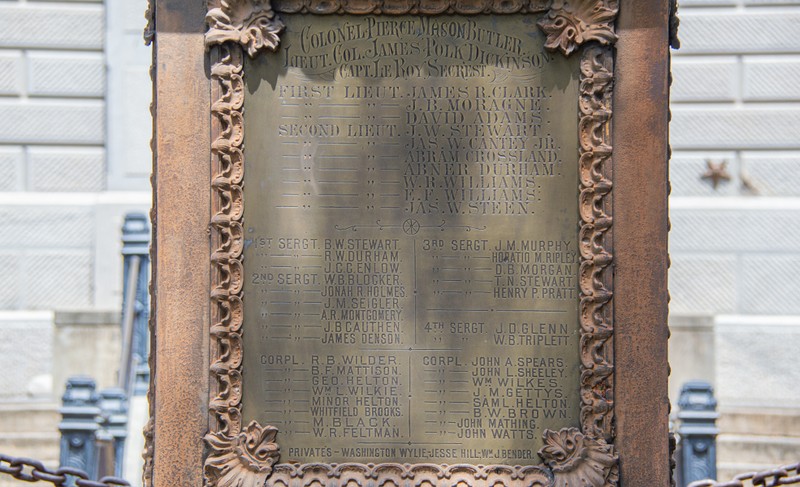
Palmetto Regiment Monument, 2019.
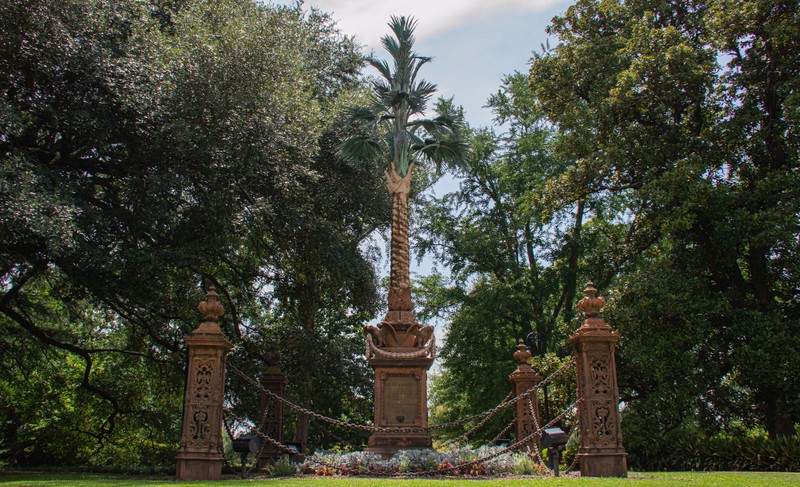
Backstory and Context
Text-to-speech Audio
Columbia, South Carolina’s Palmetto Regiment Monument was moved to its present location in 1969 as a way to recognize over 400 men from the Palmetto State who died fighting during the Mexican-American War. The war began as a result of the United States' attempt to annex Texas, a decision that divided Congress but was supported by President James K. Polk who won the election of 1844. Polk campaigned for Texas to be “re-annexed,” despite previous warnings from the Mexican government that any attempt of annexation would lead to war. Polk also campaigned to “re-occupy” Oregon Territory, as well as was interested in California, New Mexico, and the rest of what is now the U.S. Southwest. However, his offer to purchase those lands was rejected and his administration concentrated their plans for expansion on lands controlled by Mexico to the dismay of many Northerners.
Because of the rejection, Polk moved troops into a disputed zone between the Rio Grande and Nueces River, which both countries had previously recognized as part of the Mexican state of Coahuila. As a result, Mexican cavalry attacked a group of United States soldiers in the disputed zone under the command of General Zachary Taylor on April 25, 1849, killing around 12 people. They then surrounded and forced soldiers out of an American fort along the Rio Grande. When Taylor called in reinforcements, he defeated the Mexicans at the battles of Palo Alto and Resaca de la Palma with better rifles and artillery than the Mexican soldiers possessed.
Following the battles, Polk reported to the U.S. Congress that America’s patience had run out even before Mexico crossed the U.S. boundary. On May 13, just two days later, Congress declared war, despite opposition from Northern lawmakers, although no official declaration ever came from Mexico. On June 29, 1846 South Carolina’s Palmetto Regiment was formed and former Governor Pierce Mason Butler was elected as colonel. While the War Department initially told the regiment they were not needed, on November 16, they were requested for immediate service. By then, the regiment had to be rebuilt due to the term of enlistment changing from one year to the duration of the war. The regiment reported to Camp Magnolia near Charleston, South Carolina, before departing for Mobile, Alabama December 27-28. From there, they sailed to Lobos Island, trained, and landed below Vera Cruz March 8, 1847, where they assisted in establishing siege lines.
The Palmetto Regiment led an expedition to Alvarado from March 30 to April 6; afterward, they traveled through Jalapa to Puebla and remained there until August 7, when they departed for the Valley of Mexico. On August 20, they were involved in both the battles of Contreras and Churubusco, in which Butler was killed during heavy fighting. 11 others in the regiment were killed and 126 were wounded. Then, after a brief armistice, the regiment attacked Chapultepec and Mexico City on September 12. The Palmetto Regiment was the first regiment to enter Mexico City at the Garita de Belen. On May 29, 1848 the regiment finally left for home, arriving in Mobile, Alabama from June 24-29, left to find their own way home afterward. Of the 1,048 men who enrolled in the regiment, 441 did not return.
The Palmetto Regiment Monument was installed on the south side of the State House in 1854, then purchased by the General Assembly around 1856-1858. Designed by Charleston artist Christopher Werner, it is one of the country’s few monuments to the Mexican-American War. The monument features a 20-foot-tall bronze, copper, and cast iron palmetto tree in a combination of Greek Revival and Romantic styles. Enslaved craftsmen were likely responsible for the construction of the tree, which is standing on a base and inscribed with the names of around 450 men who died in the war. The monument is also surrounded by four low, decorative posts, which Werner originally created ornate arches to connect, but were later replaced by the chains that connect them today. The monument remained in its south side location throughout the Civil War, including after some branches were lost when Columbia was burned in 1865. Around 1874-1875, it was relocated north of the western wing of the State House, where it was repeatedly damaged and repaired by storms and tornadoes. It was officially moved to its present location in 1969. The inscription on the monument reads:
South Carolina
To
Her Sons
Of The
Palmetto Regiment
Who Fell
In The
War With Mexico
Anno Domino
1847
Cite This Entry
Zarilla, Olivia and Clio Admin. "Palmetto Regiment Monument." Clio: Your Guide to History. November 16, 2020. Accessed March 19, 2025. https://theclio.com/tour/1073/6
Sources
- Palmetto Regiment Monument, Historic Columbia. Accessed November 15th 2020. https://www.historiccolumbia.org/online-tours/state-house-monuments-tour/palmetto-regiment-monument.
- Meyer, Jack Allen. Palmetto Regiment, South Carolina Encyclopedia. Accessed November 15th 2020. https://www.scencyclopedia.org/sce/entries/palmetto-regiment/.
- Palmetto Regiment Monument - Columbia, South Carolina, Waymarking. March 26th 2013. Accessed November 15th 2020. https://www.waymarking.com/waymarks/WMGP5D_Palmetto_Regiment_Monument_Columbia_South_Carolina.
- South Carolina – Overview of South Carolina in the Mexican War, South Carolina's Information Highway. Accessed November 15th 2020. https://www.sciway.net/hist/sc-palmetto-regiment-mexican-war.html.
- Mexican-American War, History. June 6th 2019. Accessed November 15th 2020. https://www.history.com/topics/mexican-american-war/mexican-american-war.
- Mexican-American War, Britannica. November 10th 2020. Accessed November 15th 2020. https://www.britannica.com/event/Mexican-American-War.
https://pixels.com/featured/1-palmetto-regiment-monument-charles-hite.html
https://commons.wikimedia.org/wiki/File:Palmetto_Regiment_Monument_(Detail).jpg
https://www.historiccolumbia.org/online-tours/state-house-monuments-tour/palmetto-regiment-monument
https://www.historiccolumbia.org/online-tours/state-house-monuments-tour/palmetto-regiment-monument
https://www.historiccolumbia.org/online-tours/state-house-monuments-tour/palmetto-regiment-monument
https://www.historiccolumbia.org/online-tours/state-house-monuments-tour/palmetto-regiment-monument

